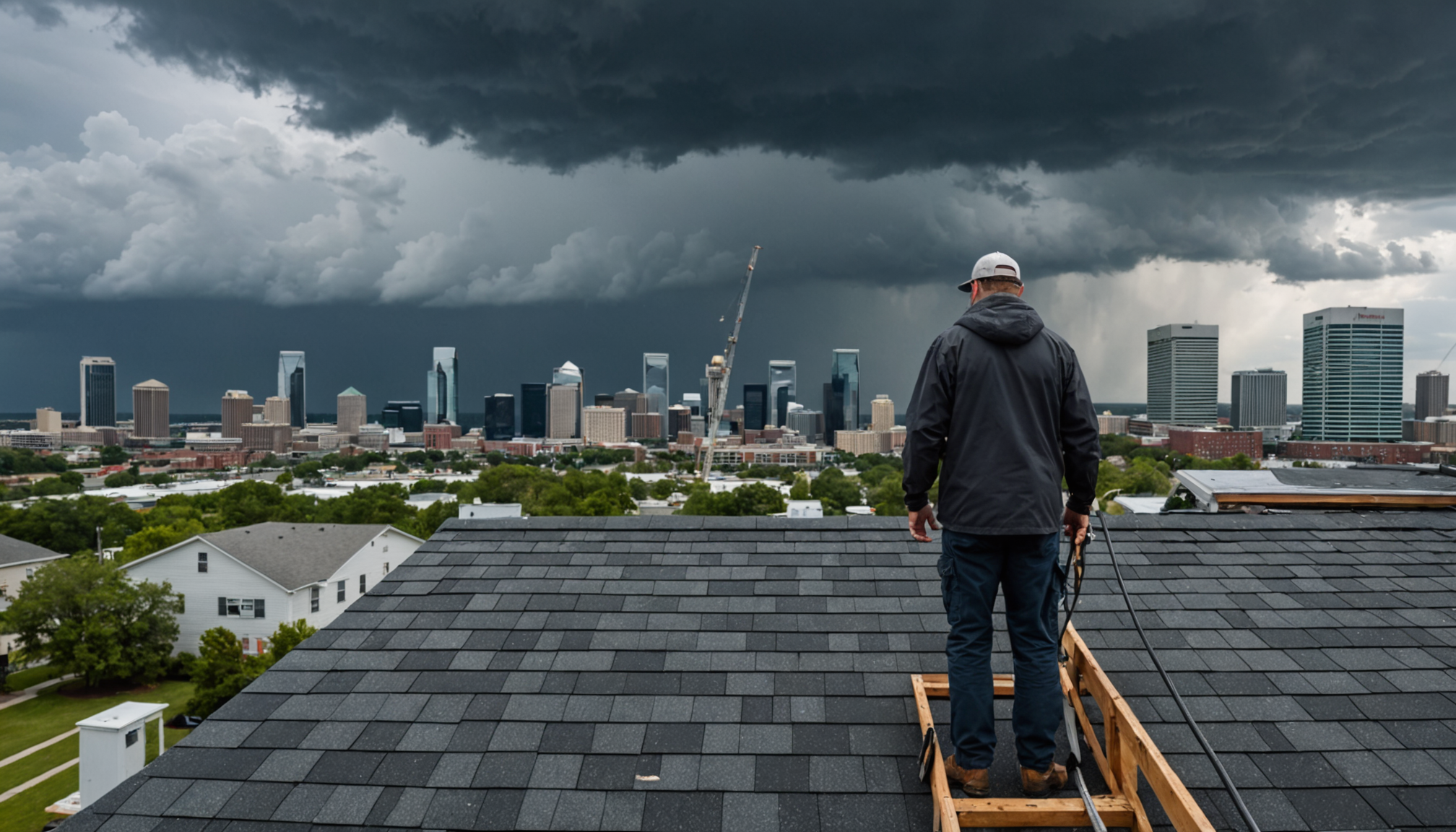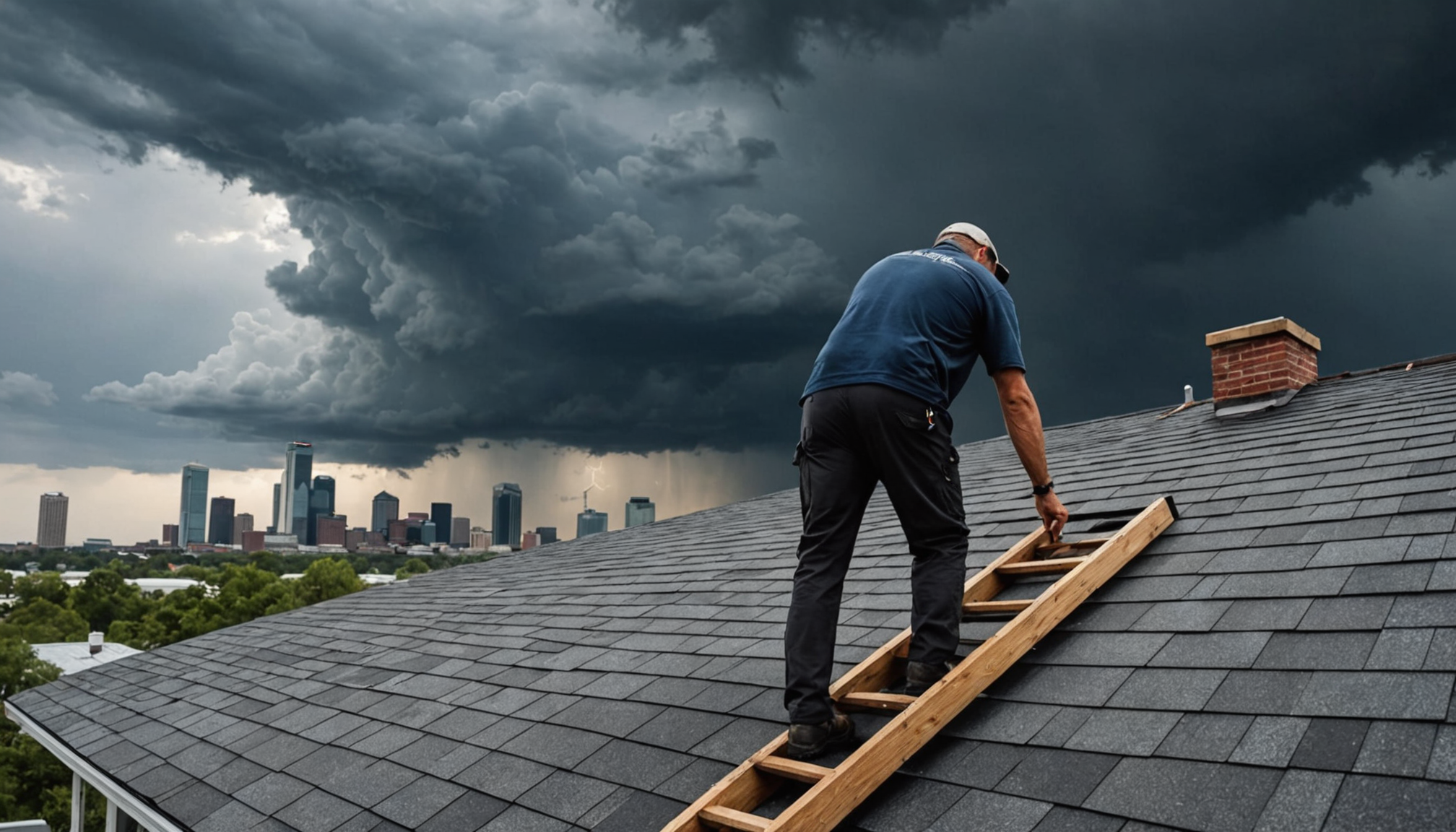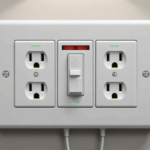Jacksonville’s exposure to severe weather patterns, including tropical storms and hurricanes, makes regular roof inspections crucial for maintaining home integrity. According to the National Weather Service, the city experiences an average wind speed of 8.8 mph, with gusts frequently exceeding 50 mph during storm events, potentially causing significant roofing damage if left unchecked.
When conducting a thorough wind damage inspection, focus on these critical areas:
- Shingle condition: Look for curling, lifting, or missing shingles, which occur in approximately 60% of wind-related roofing issues
- Ridge caps and roof edges: These areas experience the highest wind pressure and require special attention
- Granule loss: Check gutters and downspouts for excessive granule accumulation, indicating shingle deterioration
- Roof vents and protrusions: Examine for loose connections or damaged seals
The Florida Building Code requires roofing systems to withstand wind speeds of up to 150 mph in Jacksonville’s high-velocity hurricane zones. Professional roofing contractors recommend examining your roof after any storm with winds exceeding 40 mph, as even moderate winds can create weak points that may lead to future leaks.
Pay particular attention to areas where different roofing materials meet, such as valleys and transitions. These junctions are especially vulnerable to wind uplift forces. The Insurance Institute for Business & Home Safety reports that wind damage often starts at these intersection points, where even a small compromise can lead to extensive damage during subsequent storms.
Use binoculars to safely inspect from ground level, looking for:
- Loose or damaged flashing around chimneys and vents
- Sagging or deformed sections of the roof deck
- Visible gaps or separations in roofing materials
- Signs of previous repairs that may have failed
Document any findings with photographs and detailed notes, as this information can be valuable for insurance claims and tracking deterioration patterns over time. According to roofing experts at the National Roofing Contractors Association, maintaining detailed inspection records can help identify developing problems before they become major issues.
Soffit ventilation maintenance
Proper soffit ventilation plays a critical role in protecting Jacksonville homes from moisture damage and maintaining optimal attic temperatures. Regular maintenance of these essential components helps prevent water intrusion during severe storms and extends the overall lifespan of your roofing system. Experts recommend inspecting soffit vents at least twice annually, with additional checks following major weather events.
Start by examining the soffit panels for any visible damage, including cracks, holes, or separation from the fascia board. These vulnerabilities can allow wind-driven rain to penetrate your home’s structure during storms. In Jacksonville’s humid climate, blocked or damaged soffit vents can lead to excessive moisture accumulation, potentially causing wood rot and compromising structural integrity.
Clean soffit vents thoroughly using compressed air or a soft brush to remove debris, insects, and built-up dirt that can impede proper airflow. According to building science experts, proper soffit ventilation can reduce attic temperature by up to 40 degrees Fahrenheit during hot summer months, significantly decreasing the strain on your roofing materials.
For homes in coastal areas of Jacksonville, inspect aluminum soffit components for signs of salt-air corrosion, which can accelerate deterioration. Replace any damaged or rusted panels promptly to maintain effective ventilation and prevent water infiltration during heavy rains. Industry standards recommend maintaining a 50/50 ratio between intake (soffit) and exhaust ventilation for optimal performance.
- Blocked soffit vents can increase attic moisture levels by up to 95%, leading to mold growth and wood decay
- Properly maintained soffit ventilation can reduce energy costs by up to 15% annually
- Professional inspections recommend cleaning soffit vents every 6 months in Jacksonville’s climate
- Paint-clogged soffit vents are responsible for approximately 25% of roof-related moisture problems
Flashing and sealant assessment
A common oversight in Jacksonville homes is improper flashing installation and deteriorating sealants, which can lead to significant water intrusion during storms. Many homeowners make the mistake of using standard caulk instead of proper roofing sealant, which typically fails within 1-2 years in Florida’s harsh climate. Professional roofers recommend using high-grade polyurethane or silicone sealants specifically designed for roofing applications.
When inspecting flashing, pay particular attention to these frequently problematic areas:
- Chimneys and vent pipes where 40% of leaks typically occur
- Valleys and roof intersections that experience heavy water flow
- Step flashing along walls where 30% of water infiltration problems start
- Skylights and their surrounding flashing, a common source of leaks
Another critical error is the use of exposed nails in flashing installation. These nails should always be covered with appropriate sealant to prevent water penetration. According to local roofing experts, approximately 25% of leak-related service calls in Jacksonville stem from improperly sealed nail heads.
Homeowners often overlook the importance of proper flashing overlap. In areas with wind-driven rain, flashing should overlap by at least 4 inches, with upper pieces always overlapping lower ones to ensure proper water flow. Many DIY installations fail to maintain this crucial detail, leading to water infiltration during severe weather events.
The most common mistakes in sealant application include:
- Using expired or weather-inappropriate products
- Applying sealant to wet or dirty surfaces
- Under-applying sealant in critical areas
- Failing to replace deteriorated sealant before it fails completely
For optimal protection, inspect all flashing and sealants quarterly, and always after major storms. Replace any sealant showing signs of cracking, separation, or discoloration, as these indicate imminent failure. In Jacksonville’s climate, most roofing sealants should be replaced every 3-5 years, even if they appear intact.
Common leak-prone areas
Several areas of your Jacksonville home are particularly susceptible to water infiltration during severe storms and wind-driven rain events. Professional roofing contractors consistently identify these vulnerable points that require extra attention during inspections.
The intersection between the roof and exterior walls presents a significant risk, with approximately 35% of residential leaks occurring in these areas. Ensure that kick-out flashing is properly installed to direct water away from the wall and into the gutters. Missing or damaged kick-out flashing can allow water to seep behind siding and cause extensive interior damage.
Skylights remain particularly problematic, accounting for roughly 25% of reported leaks in Jacksonville homes. The rubber gaskets and seals around skylights deteriorate faster in Florida’s intense sun, creating potential entry points for water during storms. Watch for signs of seal failure, such as condensation between glass panes or water stains on interior walls below skylights.
Chimney penetrations require vigilant monitoring, as they create multiple potential leak points:
- The cricket (or saddle) behind the chimney where water accumulates
- Counter flashing where the chimney meets the roofing material
- Mortar joints that can deteriorate and create water channels
- The chimney cap and crown which prevent water from entering the flue
Pipe boots and vent penetrations represent another common failure point, with rubber seals typically lasting only 5-7 years in Jacksonville’s climate. These seemingly minor roof components account for approximately 20% of leak-related service calls. Regular inspection and timely replacement of deteriorated pipe boots can prevent costly water damage.
Valley areas where two roof slopes meet collect substantial amounts of water during heavy rains. Improperly installed or damaged valley flashing can quickly lead to significant leaks. Industry data suggests that roughly 15% of roof leaks originate in valleys, particularly during wind-driven rain events.
By focusing maintenance efforts on these known trouble spots and addressing potential issues promptly, you can significantly reduce the risk of water intrusion. Schedule professional inspections twice yearly, ideally before and after storm season, to catch and repair vulnerable areas before they become major problems.
Preventive measures for storm season
- How early should I start preparing my roof for Jacksonville’s storm season?
- Preparation should begin at least 2-3 months before the official start of hurricane season on June 1st. This allows sufficient time for necessary repairs and ensures contractors aren’t overbooked during the pre-season rush.
- What’s the most important thing I can do to protect my roof during a storm?
- Installing and maintaining proper roof straps and clips is crucial, as they can prevent wind uplift during severe storms. These hurricane fasteners should be inspected annually and upgraded to meet current Florida Building Code requirements.
- How often should I have my gutters cleaned to prevent storm-related issues?
- In Jacksonville’s climate, gutters should be cleaned at least quarterly, with additional cleanings during heavy leaf-fall seasons. Clogged gutters can cause water backup during storms, leading to soffit and fascia damage.
- Should I apply any special coatings to my roof before storm season?
- Water-resistant roof coatings can provide additional protection against leaks and extend your roof’s lifespan. These should be applied by professionals every 5-7 years, depending on the product and exposure conditions.
- What emergency repairs should I keep on hand during storm season?
- Maintain a supply of tarps, roofing tape, and plastic sheeting for temporary repairs. Also keep contact information for licensed roofing contractors readily available, as emergency repair services are often in high demand after storms.











